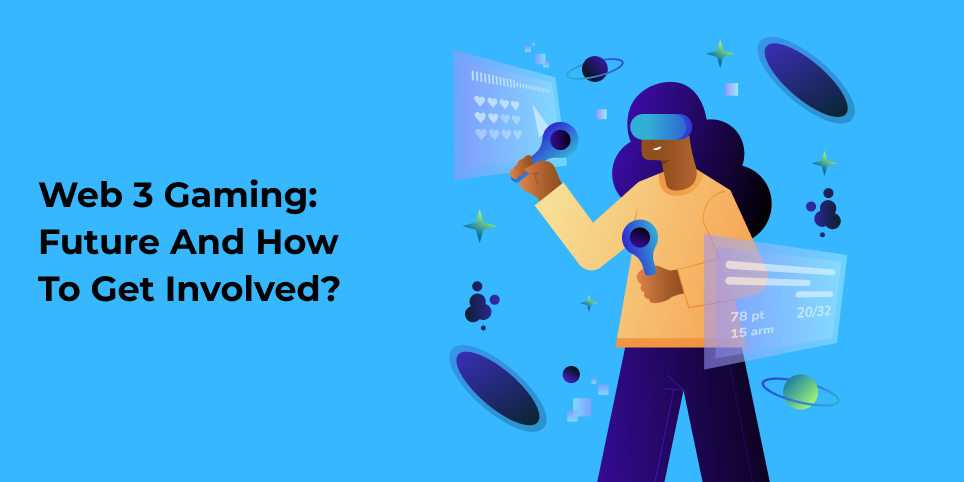
Web 3 Gaming: Future and How To Get Involved?
Web3 is a term that has recently made top headlines all over the world, with more and more startups and tech executives hopping on the bandwagon. The popularity of Web3 in the world of technology and investors is due to its ability to provide present-day users with things they are looking for these days- more control and freedom over their online presence. With the word Web 3 gaining presence, a large number of people are yet to figure out what it exactly means and the ways they can use it to make a profit in their business.
Right to the track about Web3

The right word to use here is Decentralization. While the present-day internet relies primarily on major corporation servers and systems to function, you can expect some significant self-governance in the world of Web3 since most of the data and online activities will be hosted on blockchain-based networks instead of corporate servers.
As this name suggests, Web3 goes after Web 1 and Web 2, respectively. Here is a look at the essential features of every single evolutionary step:
Web1: Web 1 refers to the original or basic World Wide Web that relied upon open standards and open source. It resulted in a rise in some of the prominent internet companies that have ever existed, like Amazon and Google.
Web 2: Web2 is focused mostly on user-generated content ushering in the age of wikis, social networks, and blogs. It was primarily built based on some concepts just like Web1 Technologies but even enables social connections and content creation.
Web3: The brand new Web3 highlights a value exchange model instead of the simple exchange of information, along with major decentralization and self-sovereignty of the internet.
Anyone can go ahead with the use of an anonymous single sign-in for participating in the Web3 world without the presence of a central authority to serve as a gatekeeper. This means that users will not be forced to reveal their personal data to perform certain tasks like transactions. They can now effortlessly verify their ownership by adhering to the use of a transparent public blockchain.
Why should Web3 focus on the interest of internet users?

Let us say you have published a post on your social media account and the post has got famous, followed by you receiving some kind of compensation for participating in this activity. Now, this sounds amazing, especially for the makers there.
Tokenization- Whether it is in the form of NFTs (Non-Fungible Tokens) or Cryptocurrency (fungible tokens)- is how this kind of arrangement is possible. Back to the example, you can use an NFT to claim ownership of the viral post, followed by trading it with others to earn money without sharing your profits with the social media platform where you have made the post.
What is the present position of Web3 gaming?
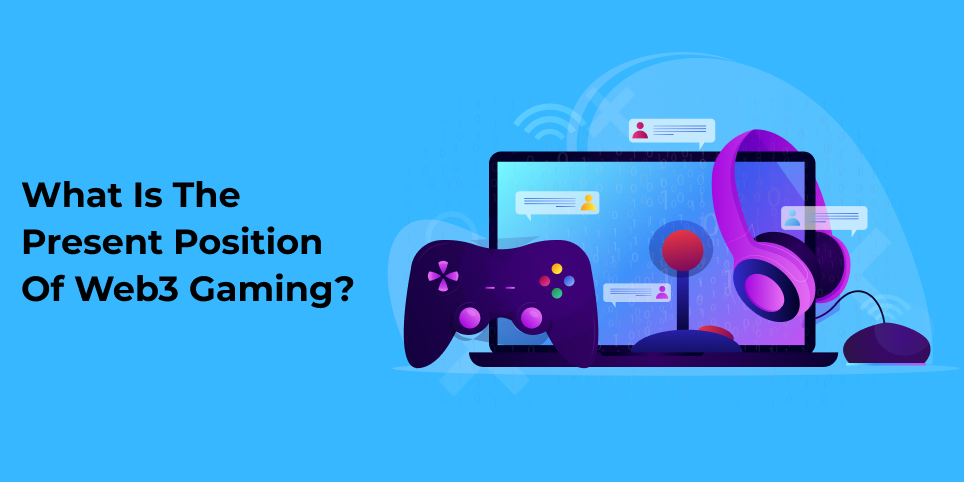
While it is true that Web3 is presently in its initial stages, we are slowly and steadily getting closer to its existence with more Web3 decentralized apps and games undergoing development.
In the gaming world, Web3-based games offer both users and producers new options to generate revenue. While the creators usually earn a good profit by simply creating some worthy digital assets as well as monetizing them via the transfer of ownership, the players can easily profit by simply investing in dealing in all these digital assets. Now this concept is like a pipe dream, but there are presently a lot of issues in Web3 gaming that must be addressed by the industry.
For beginners, it is important to know that any existing Web3-based games mostly rely upon simplistic gaming mechanics, thereby limiting the pleasure components for the players, which is why this is likely to result in low retention along with a short lifespan.
The digital assets or NFTs in all these games are usually built as opulent collectibles loaded with artificial scarcity working for specialized communities. However, they also create double-edged swords that end up hindering more people from holding on to these games. Since these games entirely rely on the new players for survival, the hurdles to entry are likely to put the long-term viability of such an economic model into grave doubt
Is it necessary to have Web3-based games?
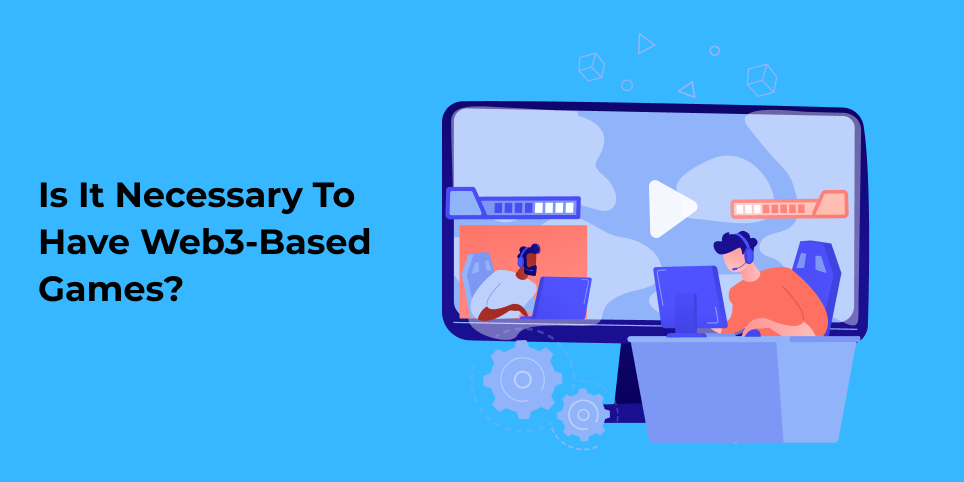
The rise and growth of Web3 are constantly changing the whole gaming landscape, thereby introducing revolutionary as well as new ways of playing involving blockchains, nonfungible tokens, cryptocurrency, and others. However, the major impact that Web3 is encountering in this new gaming world is worth considering.
It is constantly regularizing different features of gaming as well as offering brand new methods for the players to look for success. Hardly anyone has come across such a model that gives so much potential to the players and rather than concentrating that power entirely within a single game, players enjoy carrying ahead this power throughout different games within this ecosystem.
Technology will keep improving with time and as per the expectations of the players. Do you remember those snake games that you used to play during your childhood? They were quite good at keeping you fully entertained for a long time, but these games have lost the sensation they used to have. This is because now you have better access to a lot of games with high-quality graphics and storylines that can keep you engaged or even an engaged community. You will now automatically select the best alternative and enjoy these features as something you will find in a game that you love to play. Games based on Web3, which provide enough ownership and economic opportunities to the players, serve as a great solution to attract both the players and creators, thereby helping generate revenue.
Now or later, the potential to create the gaming experience along with play-to-earn potential will be the rule that players would love to see in any game. So getting back to the question we started with at the beginning of the paragraph,- do we need web-3-based games? The answer is definitely yes. If not now, it will eventually become a highly preferred option in the coming days. Thereby, the industry will have to continue closely monitoring its development and taking steps to adopt all these technologies to stay relevant and up to date.
What is defined as Decentralized ownership?

Think that you are in an action game and have purchased a weapon in the game. But you just realized that you do not need it anymore as you have got a more powerful one. Mostly what you would do is retain the old weapon you have. In the case of games based on Web-3, things are different. In secondary marketplaces, one can easily sell their old weapons just like a digital item. This turns the in-game weapon into a reliable investment that will benefit you in the coming days instead of a 1-time expense.
Now, as more and more games based on Web3 come into your life, you might be capable of bringing all your digital assets and enjoy using them across various games. You can also trade all your digital assets in exchange for the assets other players have in a very secure manner since every single transaction is conveniently captured and validated in the blockchain. Of course, these abilities will let you enjoy a better and conveniently personalized gaming experience.
Navigating the Web3 gaming world
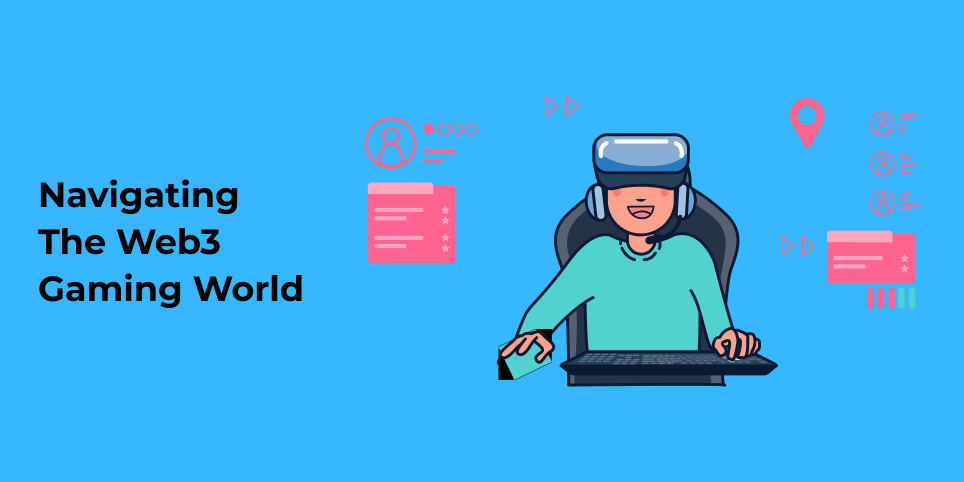
To determine how Web3-based games will change the industry, numerous things must be done. To address this, the industry players need to come together to develop a universe whereby the players can easily invest in the digital assets at a reasonable rate and continue growing them via their individual participation in these games.
1. Ownership and Interoperability
The relevant NFTs and Blockchains offer true ownership and interoperability in gaming, successfully creating a good amount of opportunities for the players in the Web-3 Metaverse.
NFTs are considered the new face of the Web3 gaming world and you have certainly noticed that their popularity is growing fast. This is because they offer something that previous gaming models lacked: i.e., the potential to own any unique in-game object or asset.
Talking of conventional gaming, players would go ahead purchasing an in-game object or asset that is unique to that game. But what really happens when that very gamer ends up switching to some different game? All the money and effort spend to acquire the item or say different objects go in vain. And this is something you must have experienced. Now, take into concern the number of gaming products that are presently wasted in the virtual world.
Coming to interoperability, it is the perfect solution for the Web3 gaming world. Gamers no more need to spend money on all these products as they can be conveniently transferred between the games. This offers the players enough control and lets them the option to switch between any title they wish to freely. And in case a player does not want to carry any item any longer or, on the contrary, finds that is even better, there is no need to take the stress! They can simply sell it to any secondary marketplace, transforming the in-game NFTs into a reliable investment instead of one-time purchase.
2. Integration of Past Gaming experience
Every single gamer comes with their personal titles. There can be games they have already mastered or those they played during their childhood. Gaming is entirely personal- it would definitely be tragic to completely leave behind every single existing title that has got you so much happiness and fun.
Fortunately, the Web3 gaming world is hearing to all the players. It enables the transformation of all these existing titles by simply upgrading them to the new in-game buying-selling model. Just think of all your treasured games being expanded into the metaverse. This is something one can hardly think of. Web3 is not only creating a new kind of gaming experience but also paving the way to integrate the past gaming world into the new one.
3. Gaming entirely focused on the players
With all these new opportunities that Web3 brings, gamers can find an ecosystem that is entirely created for them and not simply for the big tech houses. Today there are several methods you can use to earn and win, mostly via the ecosystem’s promise of interoperability and digital asset ownership. Besides that, it is even making enough space for all our past instead of just wiping it completely, thus offering the optimum balance of the new and the familiar simultaneously.
Within the world of Web3, the responsibility of gaming will be entirely to bring back appropriate decentralization and give the players complete power.
4. Effortless Integration of the Web3 games
Because of the growing and continuing popularity of the online gaming platform, it was just some time before one could come across some solutions likely enough to bridge the difference between Web3 and Web2 gaming. This is entirely happening via the APIs that can connect the established game development world with blockchains for easing production.
This will be an added advantage for many developers who can now build on the engines they are familiar with and can easily make the games compatible with the Web3 platform. This comes with numerous benefits, including Nonfungible Tokens, Crypto-wallets, decentralized marketplaces, mobile optimization, alternative fundraising via tokenization, and multi-chain interoperability.
This feature will become highly prominent as the Web3 gaming world grows and continues developing since it confers numerous benefits, including scalability, customization, and efficiency.
Web3 Gaming- a peep into the future

All Games are switching to Blockchain
The benefits of decentralized gaming are entirely self-evident. There is an absence of tracking or sale of any data to third parties, and the information is anonymous and protected. Blockchains skilfully eliminate all the issues of double spending, meaning there are zero fraudulent payments, such as the case of traditional debit and credit payment methods. Alongside, Apple, Microsoft, Google, Steam, and all other centralized companies charge over 30% for selling games on their respective platforms. This so-called percentage is referred to as something unjustified by a lot of developers.
Finally, this takes you to the main issue. The profits of Web2 gaming were essentially characterized by some large actors who have dominated the sector and earned a disappropriate share. The gaming developers ended up without receiving enough compensation for all the efforts they had made. This is significantly changing since Web3 games have relatively low-end users, and development fees are offered as tokens or the NFTS to continue growing their holdings and make decisions regarding the game’s future.
With all these in mind, developers are right now considering Web3. It is a great place to create some gaming communities instead of gaming monopolies. It can be rightly said that collaboration is the trademark of decentralized gaming development.
Getting into the Web3 Gaming
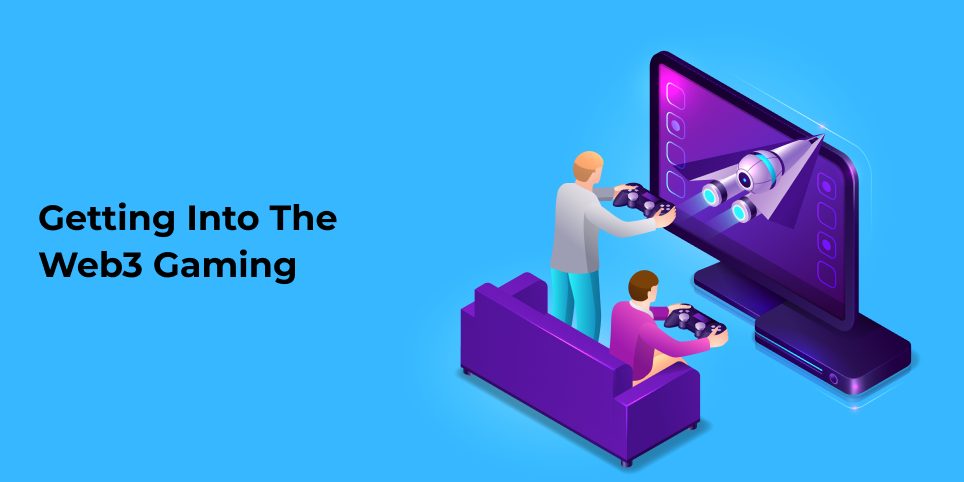
While the potential to develop Web3 gaming might look daunting, it is much easier than you think. Besides, no such specialized knowledge is needed. Interest and patience are the prime ingredients here. Say, for example, you can easily develop an NFT-based browser game via BuildSpace, whether you are an engineer, developer, or even a student. You can get familiar with the apps and wider ecosystems of cryptocurrencies and NFTs.
The best thing here is that you can conveniently work with the developers via a fixed communication network. Development of games is always done as teamwork. You can adhere to the use of some traditional engines such as Unity or Unreal and get them connected to Web3 via the available SDKs. One more route is, to begin with, your individual decentralized app on Ethereum. You can continue doing this via the Web3.js app, which permits smart contract interaction through JavaScript. As the dApps go off smart contracts and you should be able to code them in order to get started in Web3 Development. All the dApps come with a front end, smart contracts, and a wallet as the 3 prime components.
Overcoming any existing hurdles
Irrespective of various advantages, there are numerous obstacles to get rid of. The tokenization incentive system must be perfect for eliminating a few users from getting strong enough. It needs to find proper balance among all the stakeholders, including gamers, developers, investors as well as media outlets. It is important to realize that the problem is not simply the marketers or investors. It is right when all these groups try to wield a lot of power. They are, however required for extremely successful games.
It is very tough to strike a significant balance between the rewards and an amazing gaming experience. Games such as Axie Infinity are all about investment instead of gameplay, which is certainly not a path that the creators wish to take up. The rewards received in an interesting game have to be the consequence of efforts instead of the primary reason for the activity itself. Though this difference might appear minor, it needs to be significantly play-earn instead of play to earn.
There are even some technical issues that need to be dealt with. Because of Ethereum network glitches, some games like Crypto Kitties faced exorbitant gas fees. Many other blockchains, such as Polygon and Solana, may be cheaper, faster, and scalable. Irrespective of all these talks related to efficiency, and scalability, many other blockchain games are becoming slow because of smart contract constraints.
Conclusion
It is equally important to keep in concern that while Ethereum stays dominant in the gaming and NFT market, this might not be the case every time. With time it has proven to possess pricing inefficiencies and scalability even if the same remains a constant place to begin. Solona will likely become an enhanced chain with even better speeds, scalability, and efficiency. Polygon, too is known to possess several partnerships and acquisitions in the gaming world of Web3. The existing gaming world has not committed any mistakes. But play-to-earn games have added a lot of difference in simply introducing blockchain functions in gaming. You can have games that allow you to earn by only playing them. Along with this, players can earn in NFTs or Crypto, which they can trade.
Irrespective of this, the future of the Web3 ecosystem is looking ahead to involve interoperability between the subchains and blockchains, allowing developers to continue working on some customized and specific games exclusively for the target audience. Both developers and gamers will see more equitable rewards and a high caliber of some published games via well-divided ledger technology.
With such positive vibes around popular games adhering to the ‘play-to-earn’ model like Axie Infinity, it is quite natural to think of how they will fare in the near future. The support provided by Blockchain ensures transparency and security along with the participation of NFTs. The formation of some powerful communities would be the perfect highlight of some new games based on blockchain. So now, you need to simply wait and see how the new generation of games is shaping up with Blockchain in the Web3.0 platform.



